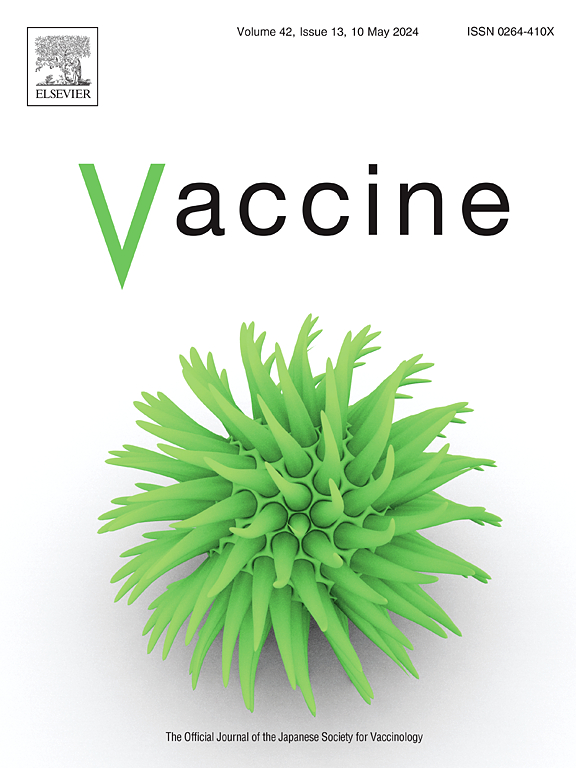IFITM knockout DF1 cells produce higher influenza and newcastle disease viral yields: a proof of concept for avian origin cell-based vaccine production
IF 4.5
3区 医学
Q2 IMMUNOLOGY
引用次数: 0
Abstract
Vaccines remain essential for the control of infectious diseases during poultry production, especially in high density systems. Many of poultry vaccines are currently grown in embryonated chicken eggs (ECE) or egg derived primary cells. These systems can be relatively costly and present a potential risk of supply during pandemics when demand for ECE can be high. Furthermore, the scale up of ECE vaccine production can be challenging at short notice, especially when the safe disposal of biohazardous waste is required. Avian-origin immortalised cell lines have the potential to be an ideal surrogate and remove the need to use ECE due to species match. However, the viral yield is often much lower than that of ECE which is at least partly due to the activation of interferon responses. One such response is driven by the interferon-inducible transmembrane proteins (IFITM) that are potent broad range viral restriction factors inhibiting viral cell entry. Using CRISPR/Cas9 we deleted the entire IFITM locus from the immortalised chicken fibroblast cell line DF1 and examined the impact on viral growth. Multiple DF1-IFITM-KO clones confirmed that removing IFITM restriction not only augmented infectivity and viral surface protein expression but significantly increased the viral yield up to 1.5 log10 PFU/ml and 0.8 log10 PFU/ml for influenza A virus (IAV), and Newcastle disease virus (NDV) LaSota strain, respectively. Expression of IFITM3 but not IFITM1 in DF1-IFITM-KO cells restored AIV restriction, while expression of both IFITM1 and IFITM3 restricted NDV infectivity. Together, these data confirm that IFITM proteins significantly reduce viral infectivity and growth in chicken cells and that removing this barrier has the potential to improve cell- based vaccine production.
IFITM敲除DF1细胞产生更高的流感和新城疫病毒产量:基于禽源细胞的疫苗生产概念的证明
疫苗对于控制家禽生产过程中的传染病仍然至关重要,特别是在高密度系统中。目前,许多家禽疫苗是在胚胎鸡蛋(ECE)或鸡蛋衍生的原代细胞中生长的。这些系统可能相对昂贵,并且在大流行期间对欧洲经委会的需求可能很高时存在供应的潜在风险。此外,扩大欧洲经委会疫苗生产可能在短时间内具有挑战性,特别是在需要安全处置生物危险废物的情况下。鸟类来源的永生化细胞系有可能成为理想的替代品,并且由于物种匹配而无需使用ECE。然而,病毒产量通常比ECE低得多,这至少部分是由于干扰素反应的激活。其中一种反应是由干扰素诱导的跨膜蛋白(IFITM)驱动的,IFITM是抑制病毒进入细胞的有效的大范围病毒限制因子。利用CRISPR/Cas9技术,我们从永生化鸡成纤维细胞系DF1中删除了整个IFITM位点,并检测了其对病毒生长的影响。多个DF1-IFITM-KO克隆证实,去除IFITM限制不仅增强了甲型流感病毒(IAV)和新城疫病毒(NDV) LaSota株的传染性和病毒表面蛋白表达,而且显著提高了病毒产量,分别达到1.5 log10 PFU/ml和0.8 log10 PFU/ml。在DF1-IFITM-KO细胞中表达IFITM3而不表达IFITM1恢复了AIV的限制,而IFITM1和IFITM3的表达限制了NDV的感染。总之,这些数据证实,IFITM蛋白显著降低了病毒在鸡细胞中的传染性和生长,消除这一屏障有可能改善基于细胞的疫苗生产。
本文章由计算机程序翻译,如有差异,请以英文原文为准。
求助全文
约1分钟内获得全文
求助全文
来源期刊

Vaccine
医学-免疫学
CiteScore
8.70
自引率
5.50%
发文量
992
审稿时长
131 days
期刊介绍:
Vaccine is unique in publishing the highest quality science across all disciplines relevant to the field of vaccinology - all original article submissions across basic and clinical research, vaccine manufacturing, history, public policy, behavioral science and ethics, social sciences, safety, and many other related areas are welcomed. The submission categories as given in the Guide for Authors indicate where we receive the most papers. Papers outside these major areas are also welcome and authors are encouraged to contact us with specific questions.
 求助内容:
求助内容: 应助结果提醒方式:
应助结果提醒方式:


